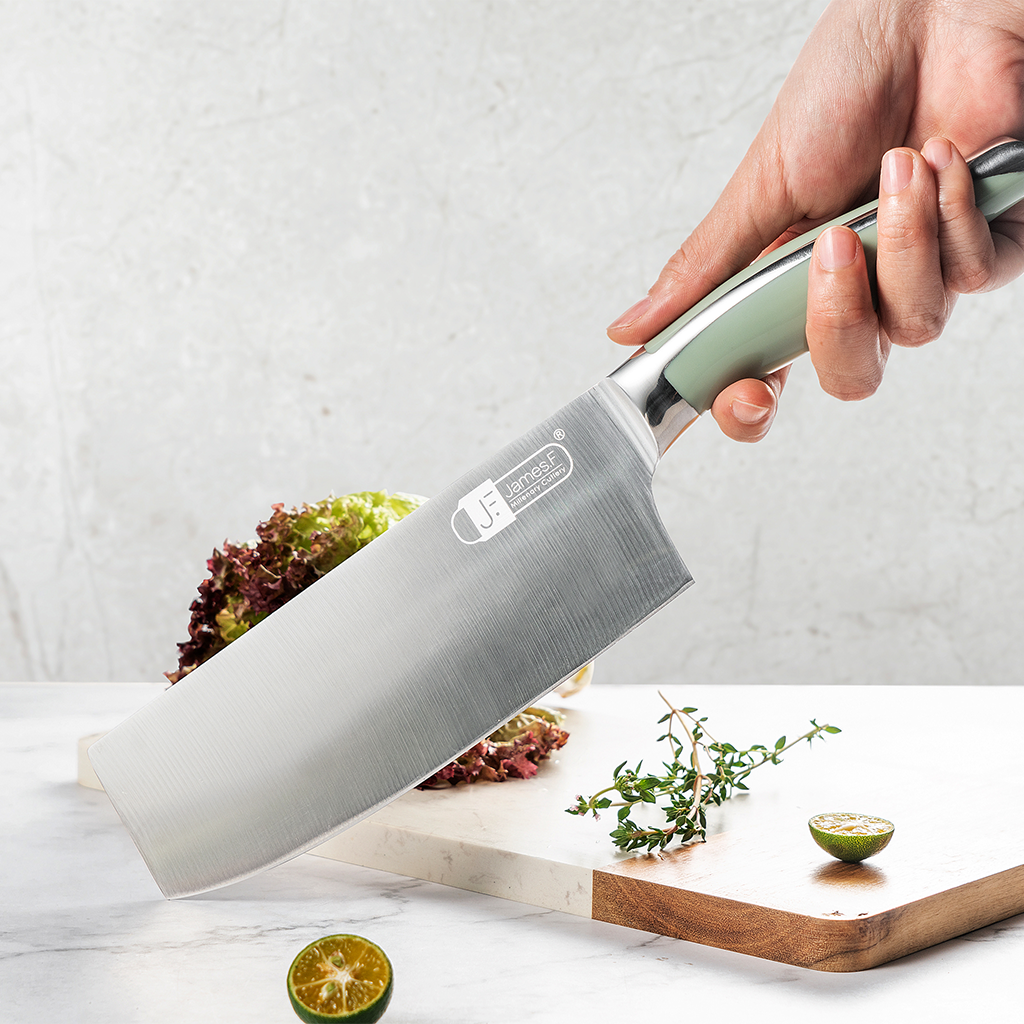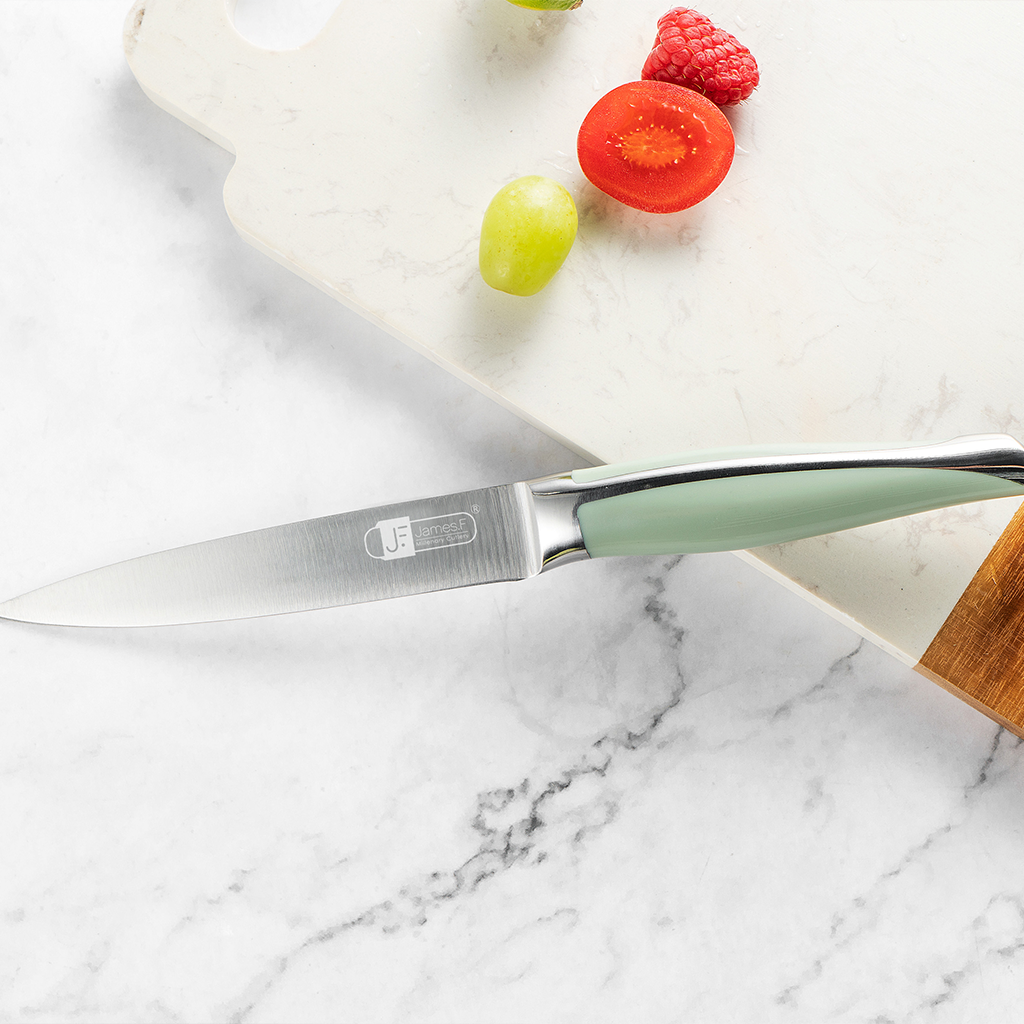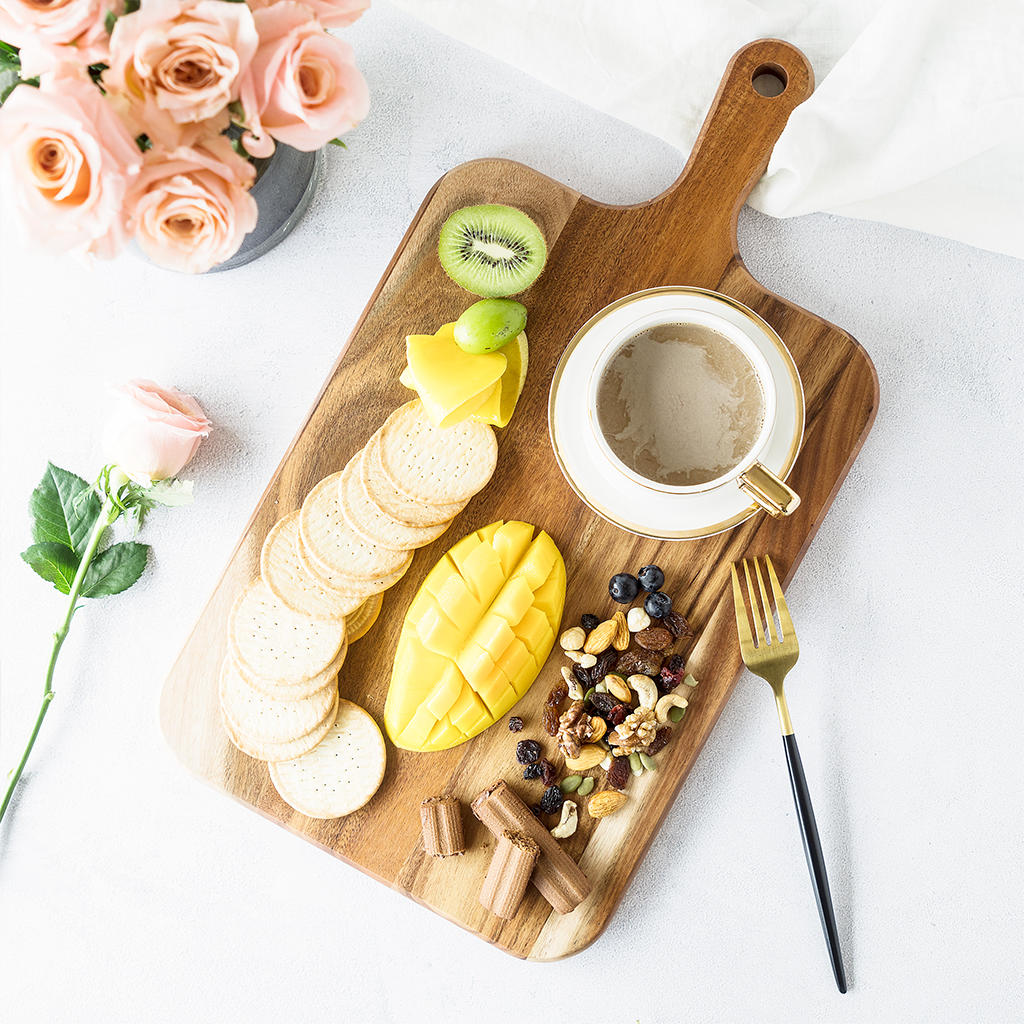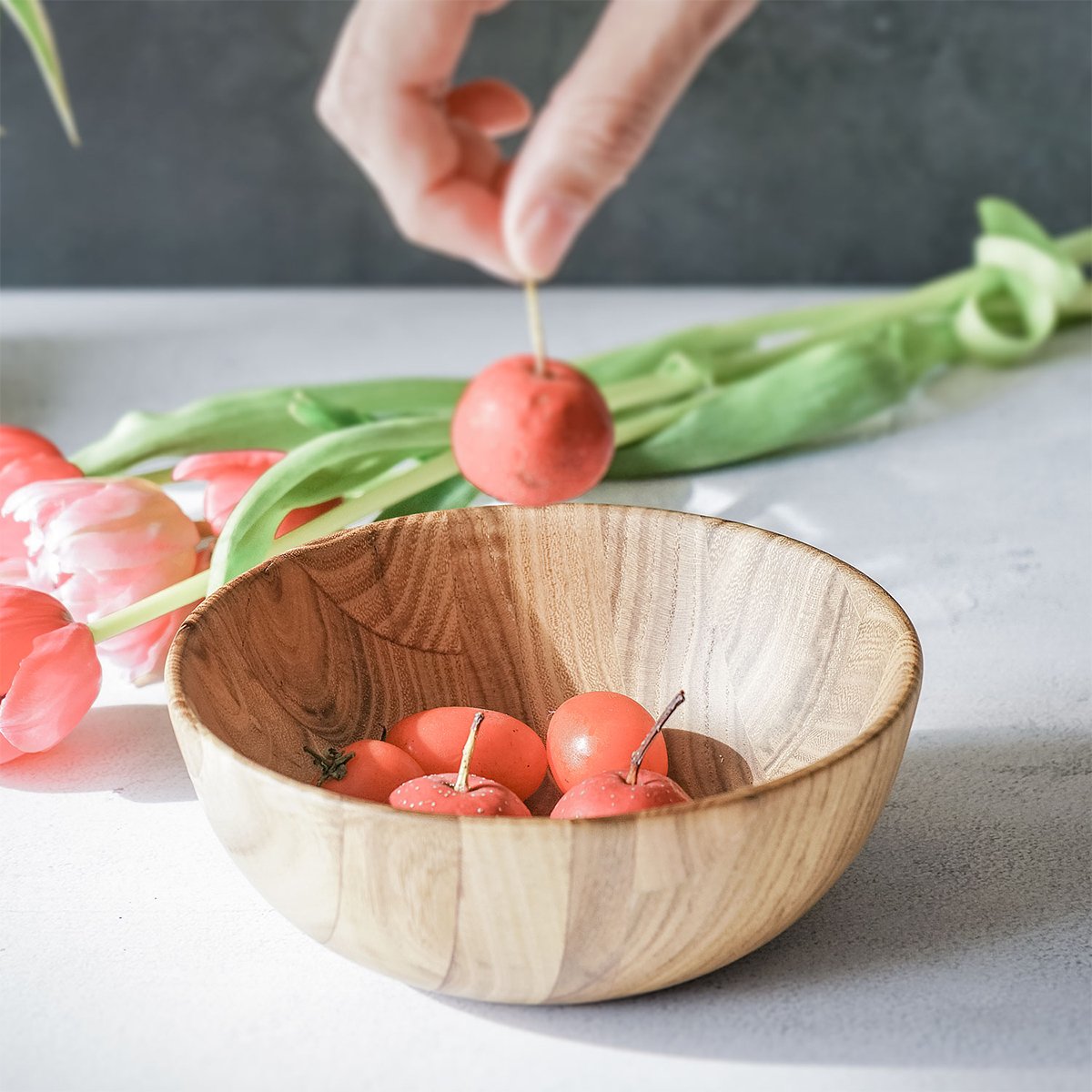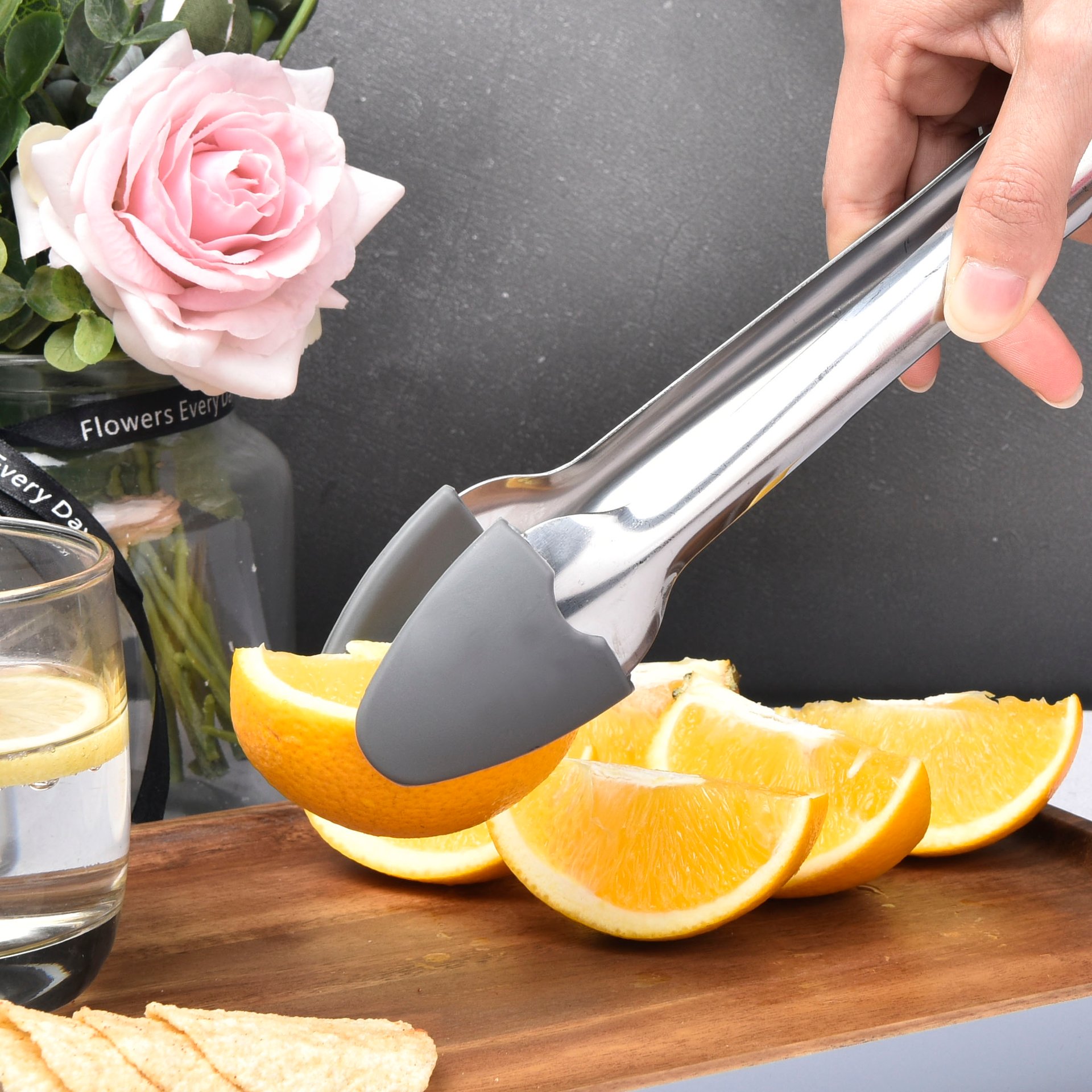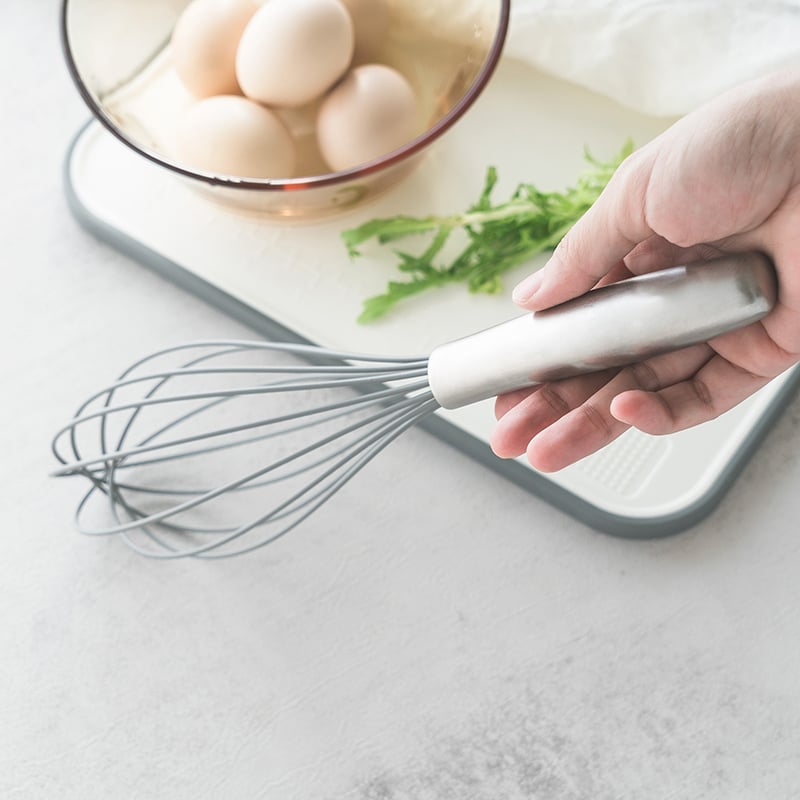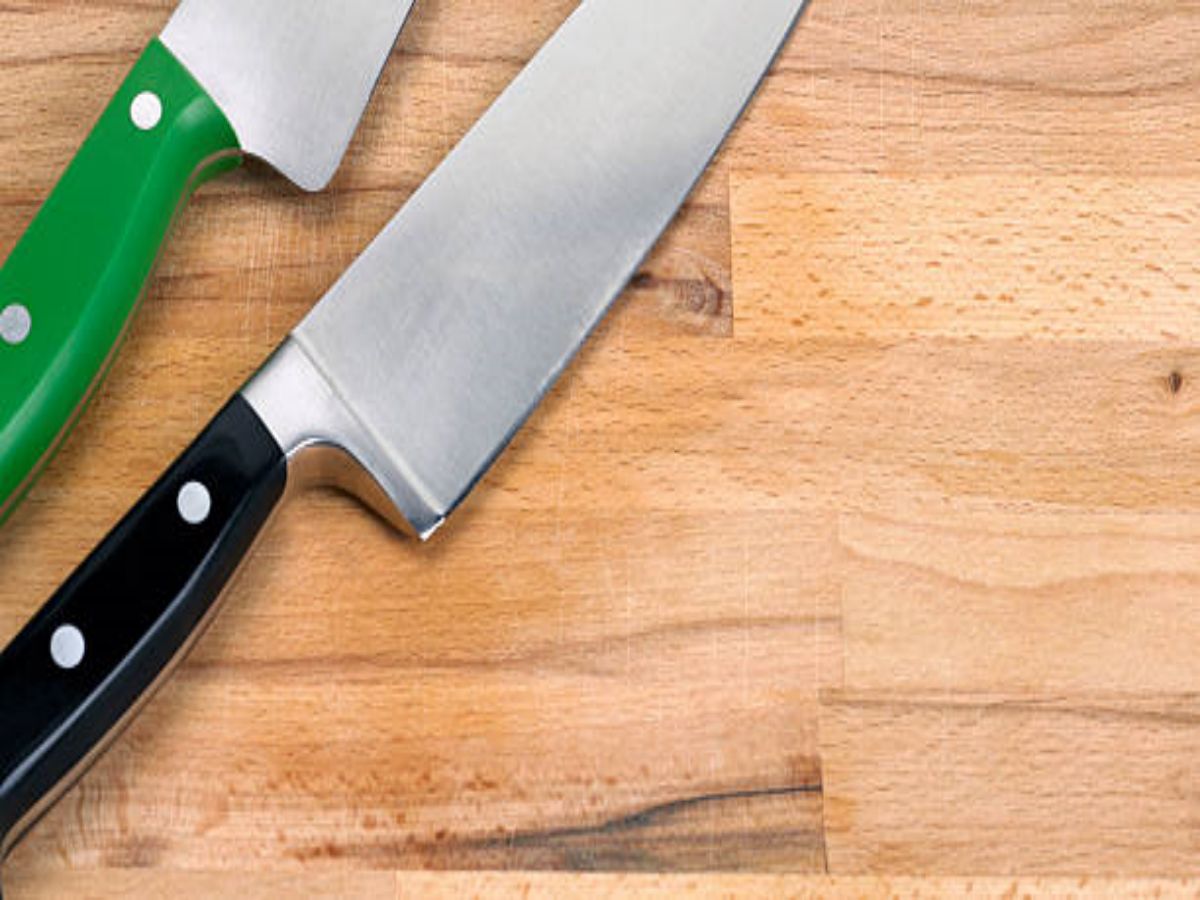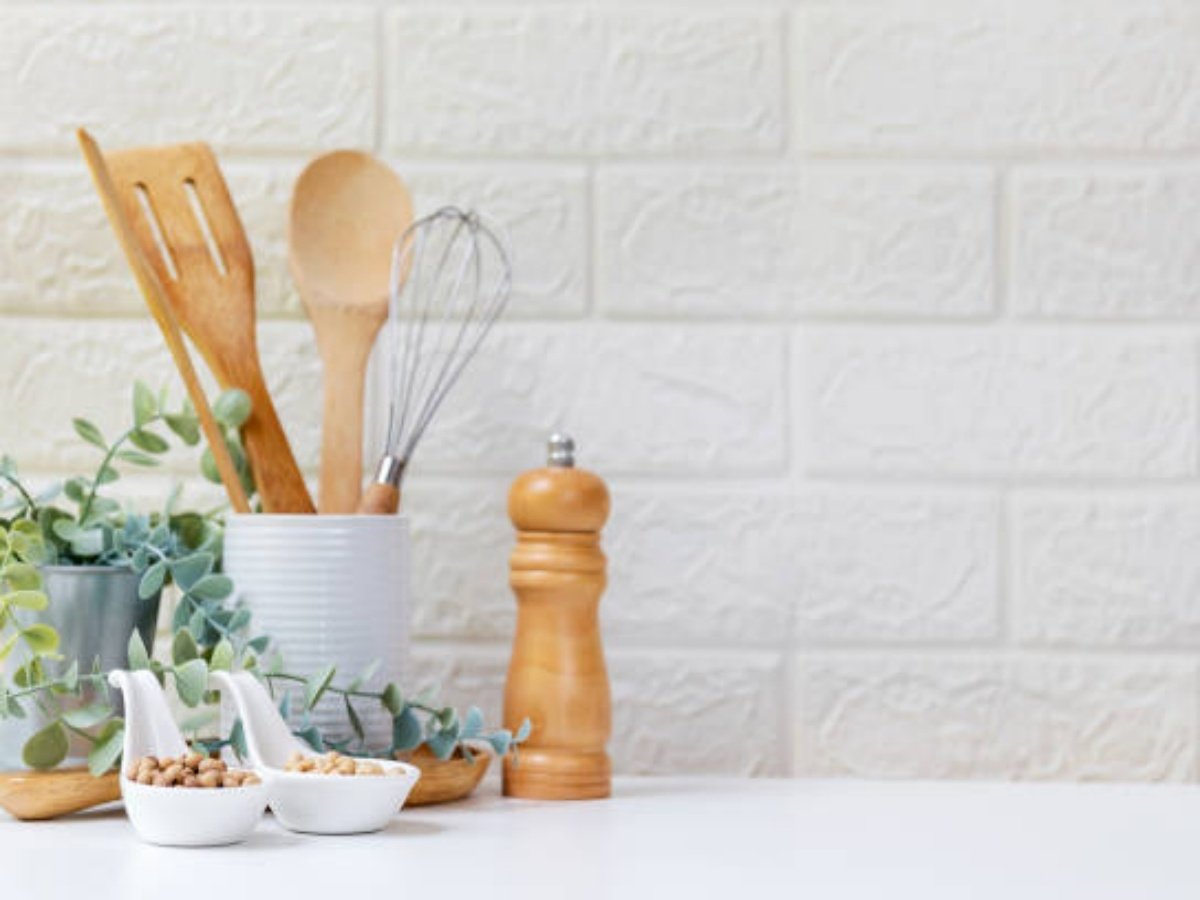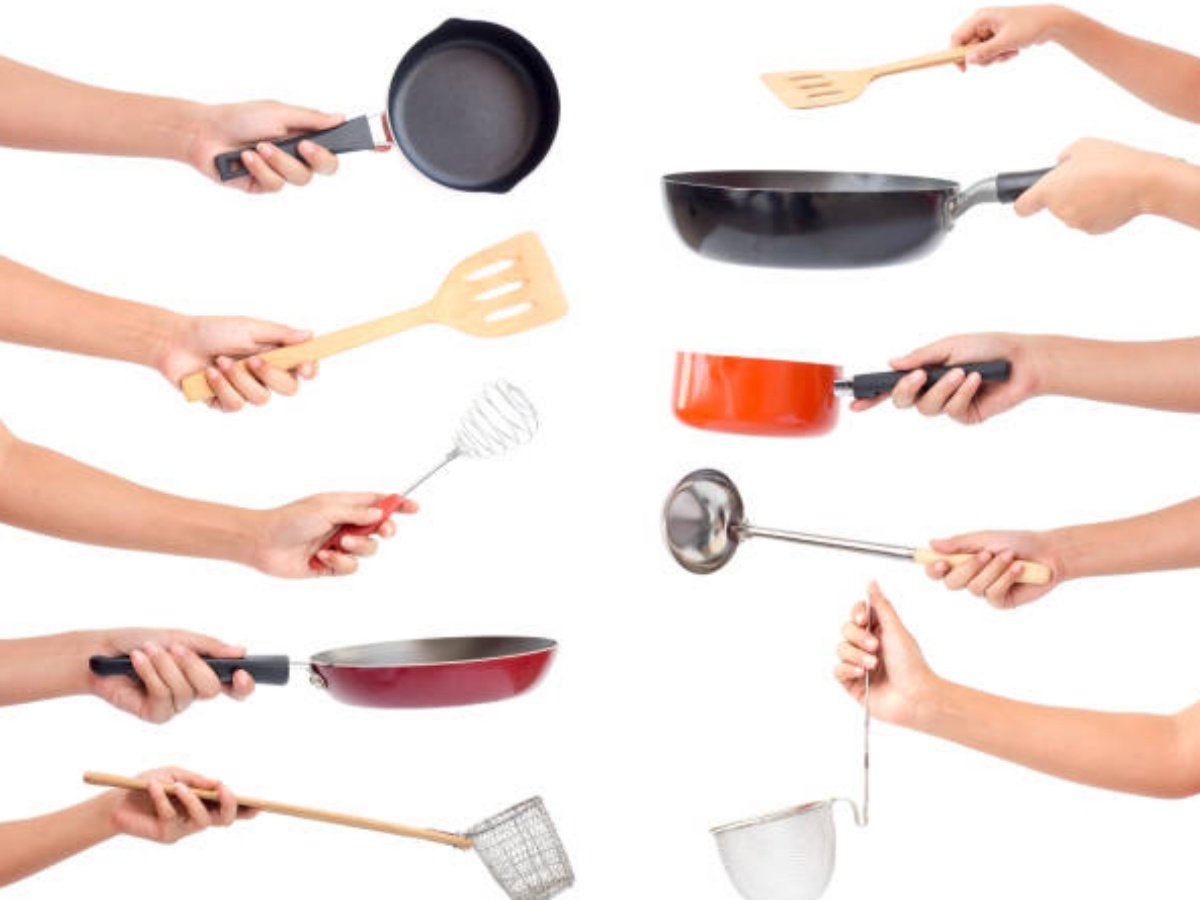Recipe
Enhancing Your Dining Etiquette: The Art of Using an Eating Fork
Enhancing Your Dining Etiquette: The Art of Using an Eating Fork
Mastering the Basics of Using an Eating Fork
When it comes to dining etiquette, one of the fundamental skills to possess is the art of using an eating fork. Whether you are attending a formal dinner party or enjoying a meal at a fancy restaurant, knowing how to handle your fork with grace and precision can make a significant difference in your dining experience. In this article, we will explore the various aspects of enhancing your dining etiquette by focusing on the proper usage of an eating fork.
Choosing the Right Fork for the Occasion
Before we delve into the techniques of using an eating fork, it is essential to understand that there are different types of forks available, each designed for specific purposes. When setting the table, hosts often provide a variety of forks, including dinner forks, salad forks, and dessert forks. The key to selecting the right fork is to observe the order of the courses being served. Start with the outermost fork and work your way in as each course is presented.
The Proper Way to Hold an Eating Fork
Now that you have chosen the appropriate fork for your meal, it is time to learn how to hold it correctly. Hold the fork with your dominant hand, gripping it between your thumb and index finger. Allow the handle to rest on your middle finger for added stability. Remember to ensure a relaxed grip, as gripping the fork too tightly can appear tense and uncomfortable.
Navigating Through a Formal Dinner
Formal dinners often consist of multiple courses, each requiring a different set of cutlery. When using an eating fork, it is crucial to navigate through the meal with finesse. Begin by using the outermost fork for the first course, and once it is completed, place it neatly on your plate. Proceed to the next fork, working your way inward until you reach the final course. Remember to pace yourself and follow the lead of your dining companions.
Mastering the Art of Cutting Food with an Eating Fork
When faced with food that requires cutting, such as steak or chicken, it is essential to know the proper technique. Hold the food steady with your fork while using your knife to cut through it. Once the food is cut into bite-sized pieces, release the knife and switch the fork to your dominant hand to bring the food to your mouth. Avoid using the knife to bring the food to your mouth, as it is considered improper dining etiquette.
Proper Placement of an Eating Fork
When you are not actively using your fork during a meal, it is crucial to place it properly. The general rule is to rest your fork on the left side of your plate, tines facing down. This placement indicates to the server that you have finished and do not require any more food. Avoid placing the fork on the table or leaving it in the food, as these actions can be seen as unhygienic and impolite.
Dealing with Difficult-to-Eat Foods
Some foods can prove to be challenging to eat with a fork, such as spaghetti or noodles. The key to handling these foods gracefully is to twist a small portion of the noodles around your fork using a spoon as assistance. Avoid slurping or letting the noodles dangle from your fork, as these actions can be considered impolite. Take your time and be patient while enjoying these types of dishes.
Respecting Table Manners in a Formal Setting
When dining in a formal setting, there are certain table manners to keep in mind to enhance your etiquette. These include keeping your elbows off the table, chewing with your mouth closed, and refraining from talking with food in your mouth. Additionally, try to match the pace of your eating with the other guests at the table and wait for everyone to be served before starting your meal.
Using an Eating Fork for Dessert
Although the main purpose of an eating fork is for the main course, it can also be used for desserts. If a dessert fork is not provided, you can use your eating fork to enjoy your sweet treat. Simply use it as you would for any other course, taking small bites and savoring the flavors. Remember to pace yourself and avoid rushing through your dessert.
Continuously Refining Your Dining Etiquette
Enhancing your dining etiquette is an ongoing process that requires practice and awareness. The art of using an eating fork is just one aspect of this larger endeavor. By continuously refining your skills and paying attention to the details, you can become a master of dining etiquette and make a positive impression in any social or professional setting.
Quote Inquiry
A Complete Guide on Round Acacia Wood Tray & Serving Board: Everything You Need to Know
A Complete Guide on Round Acacia Wood Tray & Serving Board: Everything You Need to Know
Acacia wood is known for its beauty, durability, and versatility. One popular use for this type of wood is in the creation of round trays and serving boards. In this complete guide, we will explore everything you need to know about round acacia wood trays and serving boards, including their benefits, maintenance tips, and how to choose the right one for your needs.
The Beauty of Acacia Wood
Acacia wood is prized for its natural beauty and unique grain patterns. It is a hardwood that features warm tones ranging from light to dark brown, making it an excellent choice for creating stylish and elegant round trays and serving boards. The natural variations in color and grain ensure that each piece is truly one-of-a-kind.
Durability and Longevity
One of the key advantages of acacia wood is its exceptional durability. It is a dense wood that is resistant to scratches, stains, and water damage. This makes it an ideal material for round trays and serving boards, as they are often exposed to heavy use and potential spills. With proper care, an acacia wood tray or serving board can last for many years, making it a worthwhile investment.
Functional and Versatile
Round acacia wood trays and serving boards are not only visually appealing but also highly functional. They can be used for a variety of purposes, from serving appetizers and charcuterie to displaying desserts or drinks. Their round shape adds a touch of elegance to any table setting, making them perfect for both casual gatherings and formal occasions.
Maintenance Tips
To keep your round acacia wood tray or serving board looking its best, it is important to follow some maintenance tips. Firstly, avoid soaking the wood in water or exposing it to extreme temperatures. Instead, wipe it clean with a damp cloth and mild soap, and dry it thoroughly. Additionally, applying a food-safe mineral oil periodically will help to maintain its natural luster and protect it from drying out.
Choosing the Right Round Acacia Wood Tray or Serving Board
When selecting a round acacia wood tray or serving board, there are a few factors to consider. Firstly, think about the size that will best suit your needs. Round trays and serving boards come in various diameters, so choose one that provides ample space for your intended use. Additionally, consider the thickness of the wood, as a thicker board will be more sturdy and durable. Lastly, look for a tray or board with a smooth and even surface, free from any cracks or defects.
Enhancing Your Home Decor
Round acacia wood trays and serving boards can also serve as decorative pieces in your home. Their natural beauty and warm tones can complement a range of interior styles, from rustic to modern. Display them on kitchen countertops, dining tables, or even hang them on the wall as unique wall art. The versatility of acacia wood ensures that these pieces will enhance the overall aesthetic of your home.
Eco-Friendly Choice
For those who prioritize sustainability, round acacia wood trays and serving boards are an excellent choice. Acacia trees are fast-growing and abundant, making them a renewable resource. Additionally, the production process for acacia wood products tends to be more environmentally friendly compared to other materials. By choosing acacia wood, you can enjoy the beauty of nature while minimizing your impact on the environment.
Gift Idea for Every Occasion
A round acacia wood tray or serving board makes a thoughtful and versatile gift for any occasion. Whether it's a housewarming party, a wedding, or a birthday, these pieces are sure to be appreciated. You can even personalize them by adding engravings or custom designs to make the gift even more special. With their timeless appeal, round acacia wood trays and serving boards are gifts that will be cherished for years to come.
Where to Buy
When it comes to purchasing round acacia wood trays and serving boards, there are several options available. You can find them at specialty kitchenware stores, home decor boutiques, or online retailers. It is recommended to read customer reviews and compare prices before making a purchase. By doing so, you can ensure that you are getting a high-quality product at a fair price.
Conclusion
Round acacia wood trays and serving boards are not only functional but also aesthetically pleasing additions to any home. With their natural beauty, durability, and versatility, they are an excellent choice for serving and displaying food. By following the maintenance tips and selecting the right piece for your needs, you can enjoy the timeless elegance of acacia wood for many years to come.
Quote Inquiry
How to Properly Care for and Maintain Your Chopper Knives
The Importance of Properly Caring for and Maintaining Your Chopper Knives
Chopper knives are an essential tool for any chef or cooking enthusiast. They provide precision and efficiency when it comes to chopping, dicing, and mincing ingredients. To ensure that your chopper knives remain in excellent condition and perform optimally, it is crucial to provide them with proper care and maintenance. In this article, we will explore the best practices for caring for and maintaining your chopper knives.
1. Regular Cleaning
One of the most important aspects of knife maintenance is regular cleaning. After each use, make sure to thoroughly wash your chopper knives with warm soapy water. Use a soft sponge or cloth to remove any food residue or stains. Avoid using abrasive cleaners or scrub brushes, as they can damage the blade's surface.
2. Proper Drying
After cleaning your chopper knives, ensure they are properly dried before storing them. Leaving knives wet can lead to rust and corrosion. Use a clean towel to dry the blades and handles thoroughly. Pay special attention to the areas where the blade meets the handle, as moisture tends to accumulate there.
3. Sharpening
Regular sharpening is essential to maintain the cutting performance of your chopper knives. Over time, the blade can become dull, making chopping tasks more difficult. Invest in a high-quality knife sharpener or sharpening stone and follow the manufacturer's instructions to sharpen your chopper knives effectively.
4. Storage
Proper storage plays a significant role in maintaining the longevity of your chopper knives. Avoid tossing them into a drawer with other utensils, as this can cause the blades to become scratched or damaged. Instead, consider using a knife block, magnetic strip, or knife sheaths to keep your chopper knives safely stored and protected.
5. Avoid Cutting on Hard Surfaces
When using your chopper knives, it is essential to avoid cutting on hard surfaces, such as granite or glass cutting boards. These surfaces can dull the blade quickly. Instead, opt for softer cutting boards made of wood or plastic. Additionally, refrain from using your chopper knives to cut through bones or frozen foods, as this can damage the blade.
6. Hand Wash Only
While some knives are dishwasher-safe, it is generally recommended to hand wash your chopper knives. Dishwashers can expose the blades to harsh detergents and high temperatures, which can lead to corrosion and dullness over time. Hand washing allows you to have better control over the cleaning process and reduces the risk of accidental damage.
7. Use Cutting Techniques Suitable for Chopper Knives
Chopper knives are designed for specific cutting techniques. To prevent unnecessary strain on the blade, use a proper chopping motion, keeping the tip of the blade in contact with the cutting board while moving the handle up and down. Avoid using a rocking motion or applying excessive force, as this can cause the blade to bend or chip.
8. Regular Inspections
Perform regular inspections of your chopper knives to ensure they are in good condition. Check for any signs of damage, such as chips, cracks, or loose handles. If you notice any issues, it is best to address them promptly to prevent further damage and maintain the performance of your knives.
9. Oil the Blades
To prevent rust and corrosion, consider applying a thin layer of food-grade mineral oil to the blades of your chopper knives. This helps create a protective barrier against moisture and keeps the blades in optimal condition. Be sure to wipe off any excess oil before using the knives.
10. Seek Professional Assistance if Needed
If you are unsure about How to Properly Care for and Maintain Your Chopper Knives, do not hesitate to seek professional assistance. Knife experts or reputable knife sharpening services can provide guidance on maintenance techniques and offer recommendations specific to your knives.
Quote Inquiry
Wholesale Kitchenware Items: A Complete Guide for Retailers
1. Understanding the Benefits of kitchenware items wholesale
When it comes to running a kitchenware retail business, one essential aspect is sourcing products at competitive prices. This is where kitchenware items wholesale comes into play. Wholesale purchasing allows retailers to buy products in bulk at lower prices, maximizing their profit margins. In this article, we will explore the various aspects of kitchenware items wholesale and how it can benefit retailers.
2. A Wide Range of Products Available
One of the advantages of buying kitchenware items wholesale is the vast range of products available. Wholesalers offer everything from cookware and bakeware to utensils, appliances, and dinnerware. Retailers can choose from a wide variety of brands, designs, and price ranges to cater to the diverse needs and preferences of their customers.
3. Cost-Effective Solution for Retailers
Buying kitchenware items wholesale is a cost-effective solution for retailers. Wholesalers usually offer discounted prices for bulk purchases, allowing retailers to save a significant amount of money compared to buying individual items at retail prices. This cost advantage enables retailers to set competitive prices for their customers while still making a profit.
4. Building Strong Relationships with Wholesalers
Establishing a strong relationship with kitchenware wholesalers is crucial for retailers. By maintaining a good rapport, retailers can negotiate better deals, get access to exclusive products, and receive timely updates on new arrivals and promotions. Building such relationships can give retailers a competitive edge in the market.
5. Quality Assurance and Product Authenticity
Reputable kitchenware wholesalers ensure that their products meet quality standards. They source products directly from manufacturers or authorized distributors, guaranteeing authenticity. This quality assurance reduces the risk of selling counterfeit or substandard kitchenware items, which could harm a retailer's reputation.
6. Flexibility in Stocking Inventory
Buying kitchenware items wholesale provides retailers with the flexibility to stock their inventory based on customer demand. With a wide range of products available, retailers can easily adjust their stock levels to meet changing trends and preferences. This flexibility helps avoid overstocking or understocking, optimizing sales and reducing inventory costs.
7. Expanding Customer Base with Competitive Pricing
By purchasing kitchenware items wholesale, retailers can offer competitive pricing to attract a larger customer base. Lower product costs allow retailers to set prices that are more appealing to customers, making their store a preferred choice. This competitive advantage can help retailers expand their customer base and increase overall sales.
8. Assured Availability and Timely Restocking
Wholesale kitchenware suppliers usually have a steady supply chain to ensure consistent availability of products. Retailers can rely on wholesalers to restock their inventory in a timely manner, minimizing stockouts and ensuring a continuous supply of popular kitchenware items. This reliability helps retailers maintain customer satisfaction and loyalty.
9. Easy Product Comparisons and Market Research
When retailers buy kitchenware items wholesale, they gain access to a wide range of products from different brands and manufacturers. This allows them to compare features, prices, and customer reviews, helping them make informed decisions about which products to stock. Wholesalers can also provide valuable insights and market research data to assist retailers in identifying trends and consumer preferences.
10. Online Platforms for Convenient Wholesale Purchasing
Many kitchenware wholesalers have online platforms that make wholesale purchasing convenient and efficient for retailers. These platforms provide detailed product information, pricing, and hassle-free ordering processes. Retailers can browse through catalogs, place orders online, and have the products delivered directly to their store. This saves time and effort, enabling retailers to focus on other aspects of their business.
Quote Inquiry
10 Essential Simple Cooking Tools and Equipment for Every Kitchen
Introduction
Preparing a delicious meal doesn't have to be complicated. With the right simple cooking tools and equipment, you can make your time in the kitchen more efficient and enjoyable. In this article, we will explore ten essential items that every home cook should have in their kitchen. From basic utensils to specialized gadgets, these tools will help you whip up culinary creations with ease.
1. A Sharp Chef's Knife
A sharp chef's knife is the cornerstone of any kitchen. Whether you're slicing vegetables, dicing meat, or mincing garlic, a quality knife will make your tasks easier and safer. Look for a knife with a comfortable grip and a blade that holds its edge well. Remember to sharpen it regularly to maintain its effectiveness.
2. Versatile Cutting Board
A good cutting board is essential for any food preparation. Opt for a cutting board made of wood or plastic, as they are easy to clean and sanitize. Consider having multiple boards to avoid cross-contamination between different types of ingredients. A large, sturdy cutting board will provide ample space for chopping, slicing, and dicing.
3. Non-Stick Cookware
Non-stick cookware is a game-changer in the kitchen. It prevents food from sticking to the surface, making cleanup a breeze. Invest in a high-quality non-stick frying pan and saucepan. These versatile pieces of cookware will allow you to cook a wide range of dishes with minimal oil or butter.
4. Stainless Steel Mixing Bowls
Mixing bowls are indispensable when it comes to baking or preparing salads. Stainless steel bowls are durable, easy to clean, and do not retain odors. Opt for a set of different sizes to accommodate various recipes. These bowls can also be used for marinating, whisking eggs, or tossing salads.
5. Essential Utensils
Every kitchen needs a set of essential utensils. This includes a spatula, slotted spoon, tongs, whisk, and a ladle. These tools will assist you in stirring, flipping, serving, and whisking various ingredients. Look for utensils made of heat-resistant materials, such as silicone, to avoid scratching your cookware.
6. Measuring Cups and Spoons
Precision is key when it comes to cooking and baking. Having a set of measuring cups and spoons will ensure accurate measurements of ingredients. Look for durable and easy-to-read measuring tools, preferably made of stainless steel or BPA-free plastic. These tools are essential for following recipes and achieving consistent results.
7. Reliable Timer
A reliable timer is an often overlooked but essential tool in the kitchen. It helps you keep track of cooking times and ensures that your dishes are perfectly cooked. Invest in a timer with multiple functions, such as countdown and stopwatch, to cater to different cooking needs. You can choose a traditional analog timer or opt for a digital one with additional features.
8. Immersion Blender
An immersion blender is a versatile tool that simplifies blending and pureeing. With its handheld design, you can easily blend soups, sauces, and smoothies directly in the pot or bowl. Look for an immersion blender with adjustable speed settings and detachable parts for easy cleaning.
9. Oven Thermometer
Many ovens have inaccurate temperature readings, which can affect the outcome of your baked goods. An oven thermometer allows you to monitor the temperature inside your oven accurately. This ensures that your cakes rise perfectly, cookies bake evenly, and roasts are cooked to perfection.
10. Kitchen Scale
A kitchen scale is a valuable tool for precise measurements, especially for baking. It allows you to weigh ingredients accurately, ensuring consistent results. Look for a scale with a clear display and a capacity that suits your needs. Some scales also offer additional features, such as unit conversion and tare function.
simple cooking tools and equipment, sharp chef's knife, versatile cutting board, non-stick cookware, stainless steel mixing bowls, essential utensils, measuring cups and spoons, reliable timer, immersion blender, oven thermometer, kitchen scale10 Essential Simple Cooking Tools and Equipment for Every KitchenDiscover the ten essential simple cooking tools and equipment that every home cook should have in their kitchen. From a sharp chef's knife to a versatile cutting board, these tools will make your time in the kitchen more efficient and enjoyable.Quote Inquiry
Wholesale Utensils Shop Near Me: A Comprehensive Guide
wholesale utensils shop near me: A Comprehensive Guide
Are you in search of a reliable wholesale utensils shop near you? Look no further! In this article, we will provide you with all the information you need to find the perfect wholesale utensils shop that meets your needs. Whether you are a restaurant owner, caterer, or simply someone who loves to cook, having a reliable source for high-quality utensils at wholesale prices is essential. Read on to discover the best tips and tricks for finding a wholesale utensils shop near you.
1. Understanding the Benefits of Wholesale Utensils
Before we delve into finding a wholesale utensils shop near you, let's first understand the benefits of purchasing utensils in bulk. Buying utensils at wholesale prices offers numerous advantages, including:
Cost savings: Purchasing utensils in bulk allows you to take advantage of discounted prices, resulting in significant cost savings.
High-quality products: Wholesale utensils are often of superior quality, making them more durable and long-lasting.
Wide variety: Wholesale utensils shops usually offer a wide range of products, allowing you to choose from a diverse selection.
Convenience: Having a bulk supply of utensils ensures that you never run out of essentials, saving you time and effort.
Now that we understand the benefits, let's explore how to find a wholesale utensils shop near you.
2. Utilizing Online Directories and Search Engines
The internet is a powerful tool when it comes to finding local businesses, including wholesale utensils shops. Start by using online directories and search engines to locate shops near your location. Simply enter the keyword "wholesale utensils shop near me" along with your city or zip code, and you will be presented with a list of relevant results. Explore these options and note down their contact information for further research.
3. Seeking Recommendations from Peers
Word-of-mouth recommendations are often invaluable when searching for a wholesale utensils shop. Reach out to your peers in the food industry or fellow cooking enthusiasts and ask if they know of any reliable wholesale utensils shops in your area. Personal recommendations can give you confidence in the quality and service provided by a particular shop.
4. Checking Online Reviews and Ratings
In addition to recommendations, it's important to check online reviews and ratings of wholesale utensils shops near you. Websites such as Yelp, Google Reviews, and Facebook can provide insights into the experiences of previous customers. Look for shops with consistently positive reviews and high ratings to ensure a satisfactory shopping experience.
5. Visiting Local Restaurant Supply Stores
Another avenue to explore when searching for a wholesale utensils shop near you is local restaurant supply stores. These stores often carry a wide range of utensils and kitchen equipment at wholesale prices. They are also knowledgeable about the needs of the food industry, making them a reliable source for high-quality utensils.
6. Attending Trade Shows and Exhibitions
Trade shows and exhibitions related to the food industry are excellent opportunities to discover wholesale utensils shops. These events bring together suppliers, manufacturers, and retailers, allowing you to explore a wide range of products in one place. Keep an eye out for upcoming trade shows and exhibitions in your area and make sure to attend to connect with wholesale utensils vendors.
7. Contacting Wholesale Utensils Distributors
Wholesale utensils distributors are companies that supply utensils to retail stores and businesses. Contacting these distributors directly can help you find out if they have any authorized retailers or shops near your location. They can provide you with valuable information about local wholesale utensils shops or direct you to other relevant sources.
8. Checking Online Marketplace Platforms
Online marketplace platforms such as Alibaba, Amazon, and eBay also offer a wide selection of wholesale utensils. These platforms connect buyers and sellers from around the world, providing you with access to a vast range of products at competitive prices. Make sure to filter your search results by location to find sellers near you.
9. Considering Membership in Wholesale Clubs
Wholesale clubs, such as Costco and Sam's Club, are known for offering a variety of products at discounted prices to their members. While they may not specialize solely in utensils, they often have a section dedicated to kitchenware and dining essentials. Becoming a member of a wholesale club can grant you access to wholesale utensils at affordable prices.
10. Comparing Prices and Quality
Once you have gathered a list of potential wholesale utensils shops near you, it's important to compare their prices and quality. Take the time to visit the shops, browse their product offerings, and assess the overall value they provide. Consider factors such as price, quality, variety, and customer service before making a final decision.
By following these tips and exploring the various avenues mentioned, you will be well-equipped to find a reliable wholesale utensils shop near you. Remember to prioritize quality, affordability, and customer satisfaction when making your selection. Happy utensil shopping!
Quote Inquiry
The Many Uses of a Wooden Ladle: A Comprehensive Guide
1. Enhancing Culinary Experience with a Wooden Ladle
A wooden ladle is a versatile kitchen tool that can greatly enhance your culinary experience. Whether you are cooking a hearty soup, stirring a delicious stew, or serving a delectable sauce, a wooden ladle is a must-have utensil in any kitchen.
2. The Benefits of Using a Wooden Ladle
One of the main benefits of using a wooden ladle is its ability to withstand high temperatures without conducting heat. Unlike metal utensils, a wooden ladle will not heat up and burn your hands while cooking. Additionally, wood is non-reactive, meaning it won't interact with acidic or alkaline ingredients, preserving the flavors of your dish.
3. Stirring and Mixing with Precision
When it comes to stirring and mixing, a wooden ladle provides excellent precision. Its long handle allows you to reach the bottom of deep pots or pans, ensuring that your ingredients are thoroughly mixed. The rounded bowl of the ladle is also perfect for scooping and pouring liquids without any spills.
4. Safely Serving Soups and Stews
One of the most common uses of a wooden ladle is for serving soups and stews. The deep bowl of the ladle can hold a generous amount of liquid, making it easy to portion out servings. The wooden material of the ladle also prevents scratching or damaging the surfaces of your cookware.
5. Avoiding Scratches on Non-Stick Cookware
If you have non-stick cookware, using a wooden ladle is essential to prevent scratches. Metal utensils can easily damage the non-stick coating, reducing the lifespan of your pots and pans. By opting for a wooden ladle, you can enjoy the benefits of non-stick cookware without worrying about ruining its surface.
6. Gentle on Delicate Ingredients
When working with delicate ingredients such as eggs or delicate vegetables, a wooden ladle provides a gentle touch. The smooth surface of the ladle prevents any rough handling or bruising, ensuring that your delicate ingredients retain their shape and texture.
7. Mixing Batters and Doughs
Wooden ladles are also excellent for mixing batters and doughs. Whether you are preparing pancake batter or kneading bread dough, a wooden ladle allows you to mix your ingredients thoroughly while maintaining a consistent texture. The rounded shape of the ladle's bowl makes it easy to incorporate all the ingredients evenly.
8. Decorative and Functional in the Kitchen
Aside from their practical uses, wooden ladles can also serve as decorative items in the kitchen. Hang them on a utensil rack or display them in a utensil holder to add a rustic touch to your kitchen decor. Their functional and aesthetic qualities make wooden ladles a great addition to any kitchen.
9. Caring for Your Wooden Ladle
To ensure the longevity of your wooden ladle, it is important to take proper care of it. Avoid soaking it in water for extended periods as this can cause the wood to swell and potentially crack. Instead, wash it by hand using mild dish soap and warm water, and dry it thoroughly before storing.
10. The Timeless Appeal of Wooden Utensils
Wooden utensils, including ladles, have been used in kitchens for centuries. Their timeless appeal and natural beauty make them a favorite among chefs and home cooks alike. Investing in a high-quality wooden ladle not only enhances your cooking experience but also adds a touch of tradition and elegance to your kitchen.
Quote Inquiry
Types of Wooden Spoons for Cooking: A Comprehensive Guide
The Many types of wooden spoons for cooking
Wooden spoons have been a staple in kitchens for centuries. They are versatile, durable, and gentle on cookware, making them a favorite among home cooks and professional chefs alike. There are various types of wooden spoons available, each with its own unique features and benefits. In this article, we will explore the different types of wooden spoons for cooking and how they can enhance your culinary experience.
1. Traditional Straight Wooden Spoons
Traditional straight wooden spoons are the most common type of wooden spoons used in cooking. They are typically made from a single piece of hardwood, such as maple or beech, and have a long handle with a flat, shallow bowl at the end. These spoons are perfect for stirring, mixing, and scraping the bottom of pots and pans. They are sturdy, heat-resistant, and do not scratch non-stick surfaces.
2. Slotted Wooden Spoons
Slotted wooden spoons, also known as perforated spoons, are designed with small holes or slots in the bowl. These holes allow liquids to drain while retaining solid ingredients, making them ideal for stirring soups, stews, and sauces. The slots prevent clumps or chunks from making their way into your dishes, providing a smoother texture and consistent flavor.
3. Pointed Wooden Spoons
Pointed wooden spoons, often called corner spoons, feature a tapered edge or point at the tip of the spoon. This unique shape allows for precise scraping and reaching into corners and edges of pots and pans. They are especially useful when cooking thick sauces, custards, or batters, as they help prevent burning or sticking in hard-to-reach areas.
4. Mixing Wooden Spoons
Mixing wooden spoons are designed with a longer handle and a larger bowl compared to traditional spoons. These spoons are perfect for mixing dough, batters, or other ingredients that require vigorous stirring. The extra length and bowl size provide better control and prevent splattering or spillage during mixing.
5. Curved Wooden Spoons
Curved wooden spoons, also known as round spoons or spoonulas, have a gently curved bowl that resembles a spatula. This unique shape makes them versatile for both stirring and scraping. The curved bowl allows for efficient mixing and folding, while the flat edge is perfect for scraping the bottom of pans or bowls to ensure no ingredients are left behind.
6. Tasting Wooden Spoons
Tasting wooden spoons, also referred to as mini spoons, are smaller in size compared to regular cooking spoons. They are commonly used for tasting and sampling dishes while cooking. These spoons allow you to check the seasoning and adjust flavors without the need for larger utensils. They are also great for serving small portions or appetizers.
7. Long Handled Wooden Spoons
Long handled wooden spoons are designed with an extended handle, making them ideal for deep pots and large cooking vessels. The extra length ensures you can reach the bottom of the pot without risking burns or discomfort. These spoons are perfect for making stocks, soups, and sauces that require long simmering or stirring.
8. Miniature Wooden Spoons
Miniature wooden spoons are tiny versions of traditional wooden spoons. They are often used for measuring small amounts of ingredients, such as spices, extracts, or flavorings. These spoons are precise and allow for easy handling of small quantities. They are commonly used in baking, where accuracy in measurements is crucial.
9. Handcrafted Wooden Spoons
Handcrafted wooden spoons are made by skilled artisans who carve and shape each spoon individually. These spoons are unique, often featuring intricate designs or patterns. Handcrafted spoons are not only functional but also serve as beautiful kitchen decor. They make excellent gifts for cooking enthusiasts and are cherished heirlooms that can be passed down through generations.
10. Specialty Wooden Spoons
Specialty wooden spoons come in a variety of shapes and sizes, catering to specific cooking needs. Some examples include slotted serving spoons, rice paddles, sauce spoons, and spatula spoons. These spoons are designed for specific tasks and can enhance your cooking experience by providing the right tool for the job.
types of wooden spoons for cooking, wooden spoons, cooking utensils, kitchen tools, wooden spoons for different tasks, slotted wooden spoons, pointed wooden spoons, mixing wooden spoons, curved wooden spoons, tasting wooden spoons, long handled wooden spoons, miniature wooden spoons, handcrafted wooden spoons, specialty wooden spoons
Types of Wooden Spoons for Cooking: A Comprehensive Guide
Discover the different types of wooden spoons for cooking and how they can enhance your culinary experience. From traditional straight spoons to specialty utensils, find the perfect wooden spoon for every cooking task.
Quote Inquiry
The Essential Guide to Cutting Tools and Equipment in Cooking
The Importance of Quality Cutting Tools in Cooking
When it comes to preparing delicious meals in the kitchen, having the right cutting tools and equipment is essential. From slicing vegetables to carving meat, the right tools can make all the difference in the outcome of your dishes. In this article, we will explore the various cutting tools and equipment used in cooking, their importance, and how to choose the best ones for your culinary adventures.
1. Knives: The Foundation of Every Cook's Toolbox
Knives are the most basic and indispensable cutting tools in any kitchen. A high-quality chef's knife is a must-have for every cook, as it can be used for a wide range of tasks, such as chopping, slicing, dicing, and mincing. Other essential knives include a paring knife for intricate tasks, a serrated knife for cutting bread and tomatoes, and a boning knife for deboning meat and fish.
2. Cutting Boards: Providing a Stable Surface
While not technically a cutting tool, a cutting board is an essential piece of equipment that goes hand in hand with knives. Opt for a cutting board made of wood or plastic, as these materials are gentle on knife blades and won't dull them quickly. Consider having multiple cutting boards to prevent cross-contamination between different ingredients.
3. Mandolines: Perfectly Uniform Slices
Mandolines are ideal for achieving consistently thin and even slices of fruits and vegetables. These versatile tools feature adjustable blades that allow you to choose the desired thickness of your cuts. However, caution must be exercised when using a mandoline, as the blades are extremely sharp and can cause serious injuries if not handled properly.
4. Food Processors: The Power of Efficiency
Food processors are incredibly useful cutting tools that can perform a wide range of tasks, including chopping, pureeing, and slicing. With various blade attachments, you can customize the machine to suit your needs. Food processors are particularly handy when preparing large quantities of ingredients or when you need a consistent texture.
5. Kitchen Shears: More Than Just Scissors
Kitchen shears, also known as kitchen scissors, are a versatile cutting tool that can handle tasks beyond just cutting through chicken bones or opening packages. They are great for snipping herbs, trimming fat from meat, and even cutting pizza. Look for kitchen shears with a comfortable grip and a strong pivot point for improved durability.
6. Vegetable Peelers: Streamlining the Prep Work
Peeling vegetables can be a time-consuming task, but with a good vegetable peeler, it becomes a breeze. Choose a peeler with a sharp blade and an ergonomic handle for comfortable use. Some peelers even come with additional features like julienne blades, making them even more versatile.
7. Graters: Adding Flavors and Textures
Graters are essential for adding grated cheese, zest from citrus fruits, or finely grated vegetables to your dishes. They come in various sizes and shapes, each designed for specific tasks. Whether you need a coarse grater for shredding cheese or a fine grater for zesting, having a few graters in your kitchen arsenal can elevate your cooking to the next level.
8. Measuring Tools: Precision in the Kitchen
Although not exclusively cutting tools, measuring tools like kitchen scales and measuring cups play a crucial role in cooking. Accurate measurements ensure that your recipes turn out consistently delicious. Whether you are weighing ingredients or measuring liquids, having reliable measuring tools is essential for achieving culinary success.
9. Knife Sharpeners: Keeping Your Blades Sharp
Investing in a good knife sharpener is essential for maintaining the performance and longevity of your cutting tools. Dull knives not only make cutting more difficult but also increase the risk of accidents. There are various types of knife sharpeners available, including sharpening stones, honing rods, and electric sharpeners. Choose the one that best suits your needs and regularly sharpen your knives to keep them in top shape.
10. Storage Solutions: Organizing and Protecting Your Tools
Proper storage of your cutting tools is crucial for their longevity and safety. Knife blocks, magnetic knife strips, and knife rolls are popular storage options that keep your knives easily accessible and protect them from damage. Additionally, consider investing in blade guards to prevent accidental cuts when reaching for your tools.
Quote Inquiry

